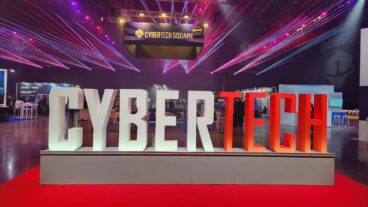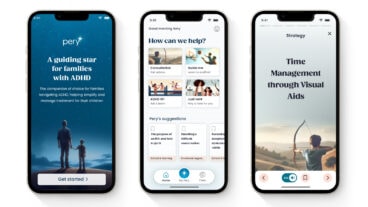The chipset from Israel’s Altair will be at the heart of the 4G cellular revolution, enabling you to perform the same things on your mobile that you do at home.
Ever wish you could play an interactive game over your iPhone with your cousin in Australia? Dream of downloading MP3 and high-def video files in the blink of an eye?
Today’s 3G cellular technology isn’t up to these tasks. But as the industry moves rapidly to revolutionary 4G mobile multimedia innovations, an Israeli company is set to supply the heart of the system: The all-important chipset.
Altair Semiconductor, based in the center of Israel in Hod Hasharon, has Israeli, American and Japanese Venture Capital funds behind its production-ready platform targeted at emerging markets. R&D is based in Israel and the chipsets are manufactured in Taiwan, from where many of the fourth-generation mobile devices will soon emanate.
“Our product will be in the hands of consumers later this year,” co-founder Eran Eshed tells ISRAEL21c. The first Altair chipsets will be tucked inside enhanced gadgets for laptops and PCs – such as mobile USB sticks. By the second half of 2011, Eshed predicts, they’ll be powering “really cool iPhone- and iPad-like devices at very reasonable price points.”
4G – for instant gratification
He acknowledges that it’s not simple to grasp the concepts behind the new technology. But through talking with his 12- and eight-year-old children about what he does at work, he has learned how to boil it down.
“Every explanation that had to do with technical involvement was futile but it’s easy for them to understand that the same things they do at home today they will soon be able to do on a mobile phone,” said Eshed. “And that tells the whole story.”
From the time 3G started rolling out in the past decade, carriers already recognized that it wouldn’t be capable of supporting the kinds of mobile services likely to be in demand a few years down the road, Eshed relates.
While 3G was a huge step forward for the mobile industry, it still can’t match the quality of wired broadband. And with consumers clamoring for bandwidth-gobbling applications they can use on the go, this disparity has become even more problematic.
“Multimedia-intense services that require a real-time connection, such as downloading an MP3, can be done with 3G if you’re not anxious to hear the song immediately,” Eshed explains. “But if you are looking for instant gratification, 3G is not practical or economical, and it’s even worse when we’re talking about video streaming.”
Revolutionizing mobile gaming and more
The quest for 4G connectivity is where Altair came into the picture. The company brought together a team that had been making communications semiconductors for 15 years and knew that 3G’s shortcomings would inevitably lead to a new mass-marketable product.
“Five years ago, we knew there was going to be a 4G but we didn’t know what it would be, so we began developing a product flexible enough to accommodate different possible ‘flavors’ of 4G,” recounts Eshed, who is also Altair’s vice president for marketing and business development. “We adapted as the field progressed.”
The wireless broadband direction eventually adopted worldwide for 4G was dubbed LTE (Long-Term Evolution), based on a technology that makes more efficient use of the radio frequencies for transmitting and receiving signals. Aside from significantly speeding-up downloading and uploading, this technology provides multiple-user access and lightning-fast data transmission – which will revolutionize mobile gaming possibilities, among many other leisure and business applications.
As one of the only companies in the world offering an LTE compatible chipset, the 110-employee Israeli firm now finds itself in competition with a small established camp of heavyweights including California-based Qualcomm. The market is likely to be huge.
“Big carriers like Verizon and AT&T Wireless have announced they will roll out some 4G services in 2010 and we’ll start seeing all kinds of interesting devices, from the somewhat less-sexy USB modems to the iPad and iPhone-like devices,” promises Eshed. “Then we’ll see amazing user experiences unlike anything we are used to. And this will all be enabled by our chipset.”













